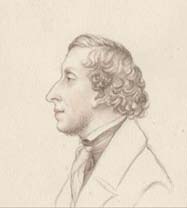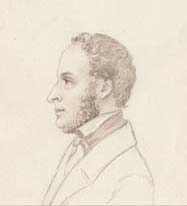The Theatre Poet and the Composer
|
…The two of us belong to each other |
|
The success of The Raven – which was staged again in a new and revised version in 1865 – continued in Andersen’s and Hartmann’s main work Little Kirsten [Liden Kirsten] from 1846. His first version of this romantic ballad opera (from 1865 listed as an opera) goes back to 1835 when Andersen for the first time handed it in to the management of the theatre with music by I.F. Bredal in contemplation. The plot is based on the folk ballad about Mr Sverkel and gains its strength from the lyric and musical description of the romantic folk ballad atmosphere. The love affair between the main characters Liden Kirsten and Sverkel is threatened by a possible brother-sister relation which is unravelled in the end. Soon Little Kirsten became the most performed Danish opera and with its richness of Danish folk ballad atmosphere it gained its position as Danish national opera throughout the entire 19th century. Andersen even succeeded in making Franz Liszt interested in the work, which led to two performances in Weimar in 1856, in a German translation authorized by the poet himself. |

